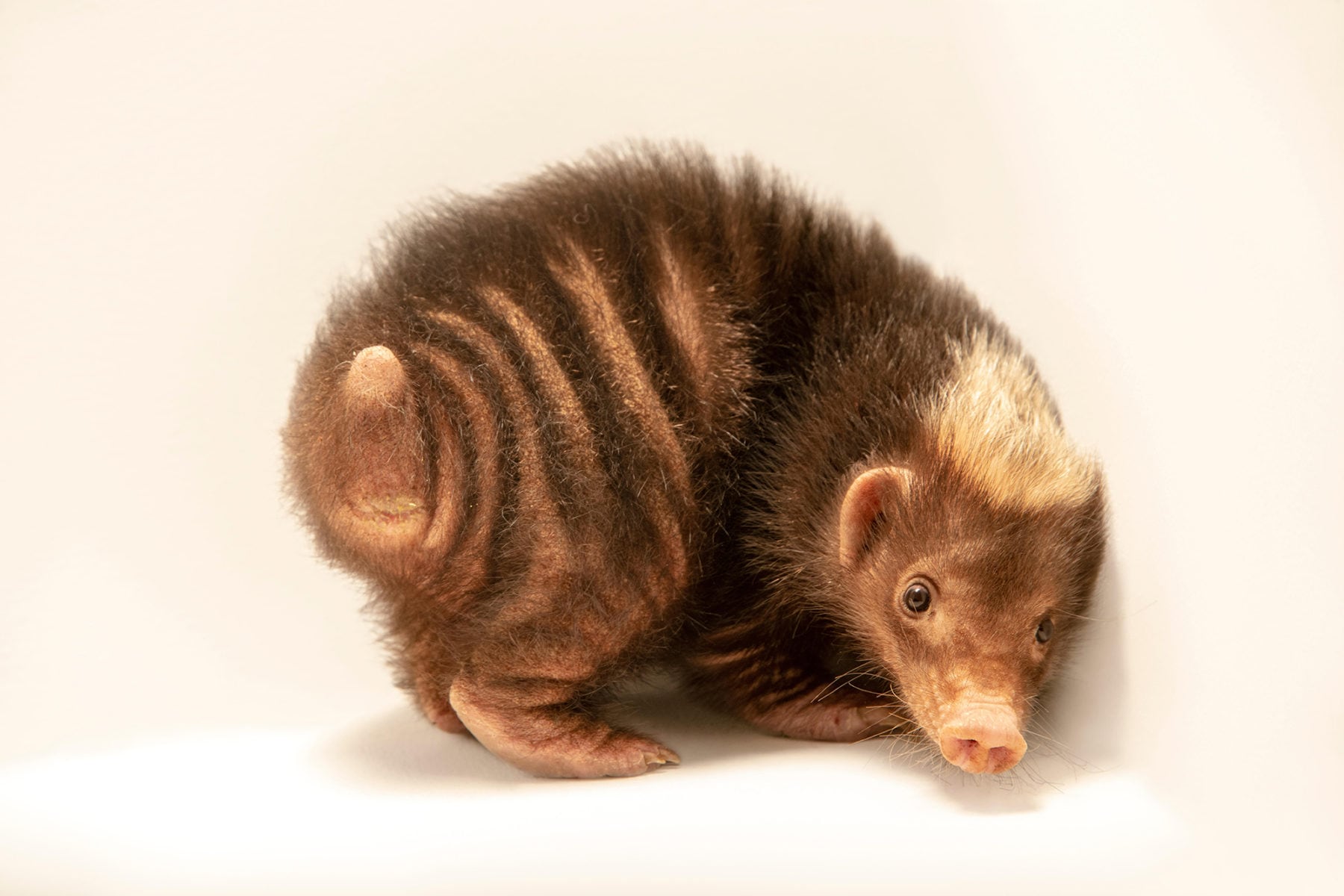The Sunda stink badger is the cutest little stinker

Bec Crew
Bec Crew

FOUND IN THE forests of Java, Sumatra, Borneo, and the northern Natuna Islands of Indonesia, the Sunda stink badger (Mydaus javanensis) have the snout of an anteater, the face of a badger, and the weaponised stench of a skunk.
Also known as the teledu, the stink badger is a shy, nocturnal animal, and will root around for worms, grubs, bird eggs, and whatever scraps it can find under the cover of darkness.
During the day, it will retreat into its burrow, which is usually a shallow tunnel dug about a half a metre deep and 2 metres long. It will even place twigs and dry leaves at the entrance to throw off any intruders.
Sometimes Sunda stink badgers won’t even bother digging their own burrow – they’ve been known to take over an abandoned porcupine burrow, or will sometimes even share a burrow with a porcupine.
If you thought skunks and porcupines were just a Northern Hemisphere thing, turns out we have both living on our doorstep, because there’s also the Sumatran porcupine (Hystrix sumatrae), endemic to Indonesia.
And like the stink badger, it’s as sweet as can be. Just look at this chill little guy:

In addition to their ability to bite and scratch, they can spray powerful noxious chemicals from their anus when harassed. This milky green secretion is nauseating at best, and at worst can suffocate or blind would-be predators such as Javan hawk-eagles, civets, and dogs.
They share this ‘talent’ with a close relative: the Palawan stink badger (Mydaus marchei), native to Philippine island of Palawan, and the neighbouring islands of Busuanga and Calauit.
Here’s one photographed at Avilon Zoo in the Philippines:

These anal secretions can hit targets a metre away, and the stench can be smelt over distances of more than a kilometre.
“For this reason, both people and domestic dogs have great respect for the animal,” say researchers.
Stink badgers are not easily spotted in the wild, but when they are, they are reportedly fairly tame around humans if you don’t try to mess with them.
Here’s a Sunda stink badger nosing around Borneo:

